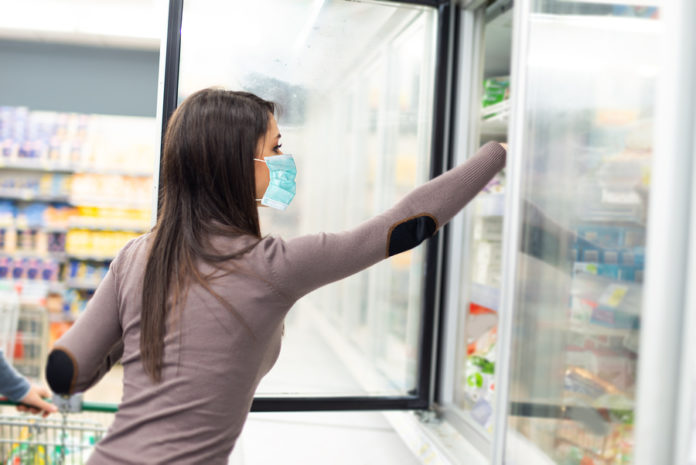
As consumers stock up on grocery items and prepare more food at home, one category is experiencing sales far above the rest. Long shelf-life and easy preparation have driven up sales of frozen foods like pizzas, meats, and vegetables during the COVID-19 situation. And a new study from the American Frozen Food Institute (AFFI) suggests those elevated sales will continue for the next few months.
According to the report, frozen food sales were already on an upward trend before the pandemic. But the category grew exponentially in March. Compared to the same weeks in 2019, frozen food sales were up 80% the week of March 15 and 94% the week of March 22. Growth remained between 30% and 35% through the first weeks of April.
Changing shopping behaviors in the frozen food aisle
From early March to mid-April (when AFFI conducted the survey), 86% of consumers said they had purchased frozen food. Among those, 7% were new frozen food buyers, who rarely or never purchased such items before.
Many consumers who were already regularly buying frozen food pre-pandemic increased their purchasing and changed their product selections — 70% bought more frozen foods than usual, 72% purchased different brands (due to their first choices being out-of-stock), and 68% purchased different items.
Meat and poultry, vegetables, and pizza were the frozen items consumers purchased most frequently. Roughly one in three consumers chose to stock up on these items, buying more than they normally would. The most popular items among first-time frozen food buyers were meat and poultry, fruits, sides, and entrees, including single-serve and multi-serve products.
How consumers purchased frozen foods also shifted in the past few months — 46% of consumers reported buying more of their groceries online since early March, and 39% were specifically buying more frozen foods online. Before COVID-19, fewer than 5% of consumers made weekly online grocery purchases, and only 20% made such purchases once a month or more.
Why frozen foods?
Frozen entrees, sides, and ingredients are a convenient option for the nine in 10 Americans who report that they’ve been eating more at-home meals these days. Whether households are cooking from scratch or popping a ready-to-bake pizza in the oven, frozen foods simplify meal preparation and are less likely to expire before consumption.
These benefits of frozen products have kept sales strong. But the COVID-19 crisis left consumers with a fear of food shortages and new reasons to buy more frozen foods, especially for those who rarely bought these items before.
Here are the top six motivators for increased frozen food purchases, post-COVID-19:
- To buy food with a long shelf-life (60%)
- To stock up in case of food shortages (58%)
- To limit grocery store trips (51%)
- To make mealtimes more convenient (46%)
- To save time on food prep and cleanup (36%)
- To purchase food items they believe are safer than fresh products (33%)
The future of frozen
For at least the next few months, half of the consumers who’ve recently increased their spending on frozen foods expect to continue purchasing a lot more (18%) or somewhat more (32%) of these items.
The more people in the household, the higher the likelihood of continuing to buy more frozen foods than usual. Consumers in urban areas and those with higher incomes were also more likely to keep buying more frozen foods.
Only 12% of consumers said they would purchase less frozen items in the coming months.







